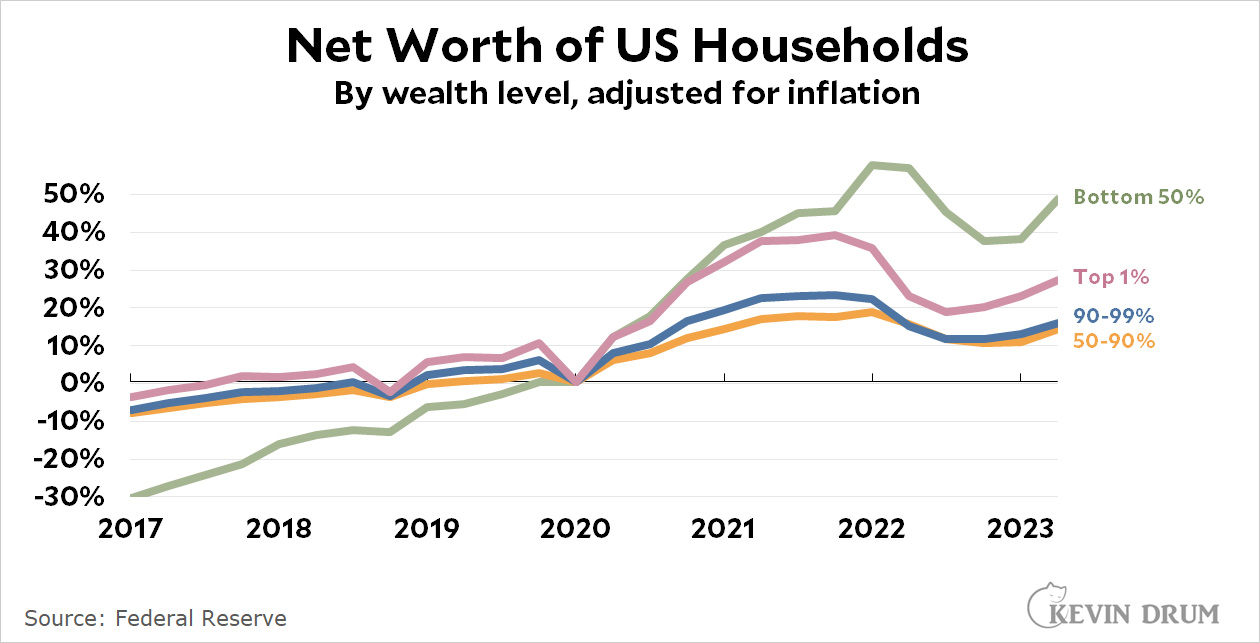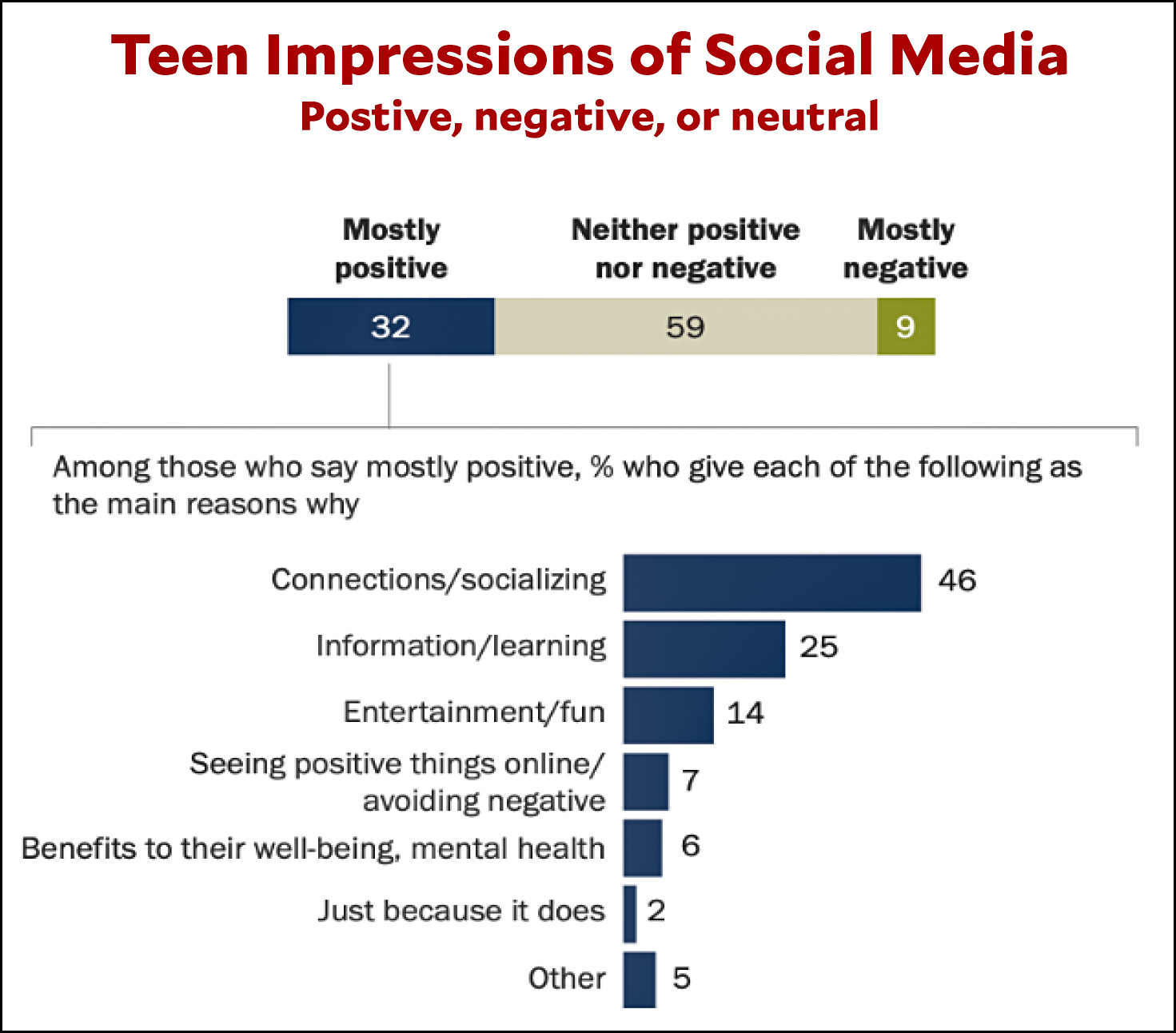How are people feeling about their personal finances? Income is one way of looking at this, but balance sheets are another. That is, how much wealth do households have? Are their savings accounts flush? Are they relatively free of debt? Net worth is the simplest way of looking at this:
 Since the start of the pandemic in 2020, net worth has increased at all economic levels. First, there was a big increase in 2020-21 thanks to pandemic benefits, which had a bigger impact on the poor than the rich. Then, starting in 2022, net worth fell. But in 2023 it started rising again.
Since the start of the pandemic in 2020, net worth has increased at all economic levels. First, there was a big increase in 2020-21 thanks to pandemic benefits, which had a bigger impact on the poor than the rich. Then, starting in 2022, net worth fell. But in 2023 it started rising again.
In other words, you can tell almost story you want here. The good news is that net worth is up since 2020. The bad news is that everyone started spending down their savings throughout 2022. But then there's more good news: that turned around and net worth rose in 2023 even though there were no new benefits and home prices were dropping.
Overall, should this make people happy or sour? I'd say happy, but it's sort of a toss-up. At the very least, though, you can say that household balance sheets are basically in good shape at all income levels and getting better. This shouldn't be causing a lot of angst about the economy.








